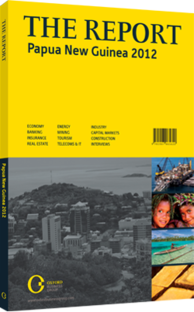Building up: Improving access to schools and rehabilitating existing facilities
Boosting access to education and its facilities in PNG’s remote rural communities is an ongoing challenge. Roughly 85% of the population resides outside of urban centres, many in small villages and hard-to-reach areas. PNG’s notoriously rough terrain and underdeveloped transport networks mean that many communities do not have easy access to schools and related facilities. According to a World Bank report released in March 2011, the national enrolment rate for grades 1-6 is around 45%, due largely to the fact that many children live too far from education centres to make the trip on a regular basis. “Geographic isolation is a major issue,” said James Agigo, the head of policy, planning and research at the Department of Education (DoE).
Furthermore, the lack of maintenance for existing education infrastructure means that many education centres currently function in states of disrepair. However, both geographic isolation and deteriorating facilities are due to be addressed in the coming years. New development programmes by the government and international organisations aim to improve access to education and boost the quality of existing infrastructure throughout the country.
OFFICIAL FOCUS: Improving and expanding the reach of formal education facilities has been a central aim of the government’s long-term vision for the sector. The National Education Plan (NEP) 1995-2004 aimed to rehabilitate existing infrastructure and construct new facilities to boost coverage and enrolment rates. The second NEP, from 2005-14, had a similar target as part of the larger goal of providing at least three years of basic education to every school-aged child.
The Universal Basic Education Plan (UBEP) 2010-19 aims to fast-track education development in the country after a decade and a half of poor progress under the NEPs. The government will cultivate a set of best practices, which will then be incorporated into a longterm development strategy. The education sector is expected to be a major beneficiary of rising government revenues in the coming years. Also in the works are a handful of official distance-learning initiatives that can reach even the most remote populations. “We are testing new television and radio-based education programmes,” said Agigo. “Though we are still in the early phases, the programme has been successful in terms of expanding access to education services for populations that are otherwise completely cut off from the formal education network.”
EXPANDING COVERAGE: In January 2011 the World Bank announced $6bn in funding for the DoE’s Flexible Open and Distance Education (FODE) initiative. The programme, currently the only public distance-learning option in PNG, offers correspondence-based classes in English, maths, science and social sciences for upper primary and secondary-level students. It operates 20 provincial centres and 25 affiliated study centres throughout the country. Though FODE has been in place for years, it has suffered from a lack of oversight and funding. That said, as of early 2011 the programme boasted total enrolment of around 46,000 active students, compared to around 65,000 students in the formal secondary education system, according to the World Bank. The new funding will go towards improving the quality of services provided by FODE and expanding enrolment in the programme.
SUPPORT: A number of private companies, foreign governments and international aid organisations also work to address educational constraints in PNG. UNICEF oversees a pilot programme in the highlands area with the aim of rehabilitating existing schools and turning them into inviting destinations for children. The project is funded by AusAID, the Australian government’s foreign aid organisation and a major development donor in PNG. Additionally, a number of private companies have invested in education infrastructure in PNG as part of their corporate social responsibility initiatives. Digicel, PNG’s largest telecommunications player, has funded the construction of schools in remote areas. A number of major multinational mining firms have also put money towards education infrastructure projects.
You have reached the limit of premium articles you can view for free.
Choose from the options below to purchase print or digital editions of our Reports. You can also purchase a website subscription giving you unlimited access to all of our Reports online for 12 months.
If you have already purchased this Report or have a website subscription, please login to continue.

